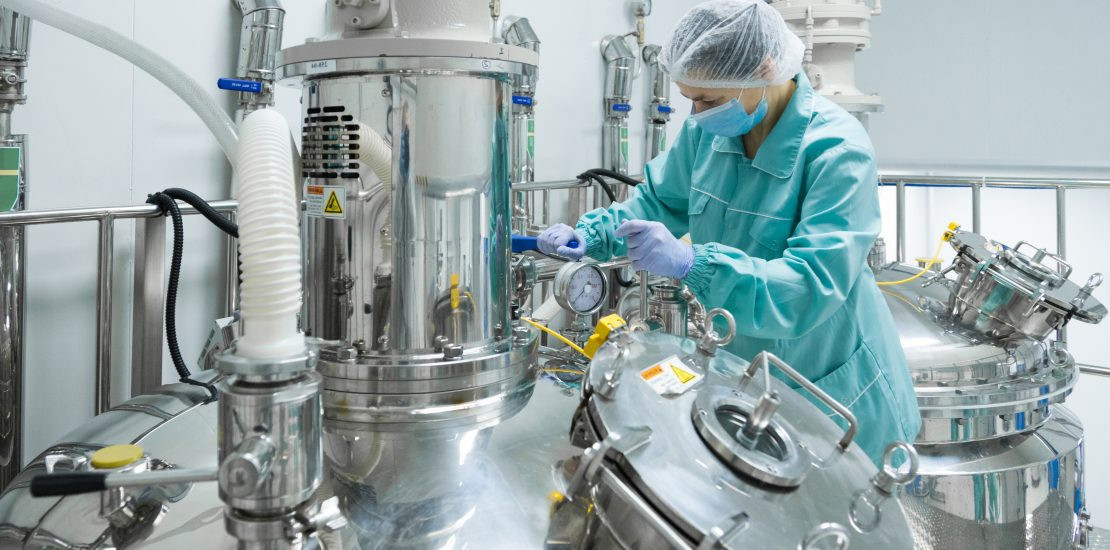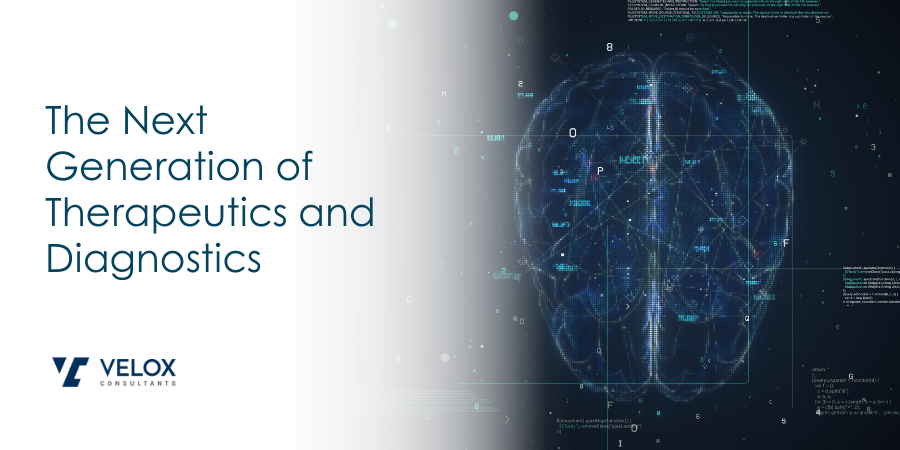An Overview
The massive surge in demand for medicines during the COVID-19 pandemic has greatly highlighted the importance of the pharmaceutical sector, including all its elements ranging from R&D to production, supply, and distribution. From the entire pharma value chain, pharmaceutical manufacturing is one of the most important aspects as it focuses not only on the production process but it’s an umbrella under which the research, production, and supply all take shelter.
Given the criticality of products, pharma manufacturing companies must adhere to the industry’s strict requirements for Good Manufacturing Practices (GMP) to ensure quality production, which applies from designing the manufacturing plants and processes up to proper packaging and distribution of quality drugs and other pharma products. This task can become quite intimidating for pharma companies. That is where pharmaceutical engineering comes into the picture.
In simplest terms, pharmaceutical engineering takes care of the designing and constructing of manufacturing plants, production processes, quality assurances, R&D, and all the other technical aspects related to pharma production. Hence, pharmaceutical engineers are critical in designing and developing plants, products, equipment, machinery, and other solutions required for drug manufacturing. Pharma companies rely heavily on pharmaceutical engineering specialists to obtain proper guidance regarding their operations to gain a competitive advantage in the latest technologies and efficient processes and achieve sustainable growth.
The size of the Global Pharmaceutical Manufacturing Market is expected to cross US$ 1 Trillion by 2030, with an expected CAGR of more than 10% from 2023 to 2030.
Pharmaceutical Manufacturing & Engineering – A Business Perspective
The most insightful way of understanding the importance of pharmaceutical engineering is through a close examination of the value chain of pharma manufacturing, as given below:
As showcased in the figure above, pharmaceutical manufacturing starts with R&D and ends once the final products reach end-users. R&D and manufacturing are the major value chain steps, where pharmaceutical engineering has the most significant role.
Pharmaceutical engineering is the backbone of the entire manufacturing operations of the industry. Pharmaceutical engineers steer the manufacturers in the correct direction in terms of all the following:
- Designing and construction of manufacturing facilities/plants
- Designing of products
- Designing, developing and procurement of operating machines and equipment
- Optimisation of production processes
- Product presentation
- Packaging of product to optimise distribution
- Product registration for marketing
- Quality assurance and many other aspects related to manufacturing.
Particularly in R&D, many pharmaceutical engineering companies and consultants help manufacturers design, build, and operate pharmaceutical research facilities to develop drugs and other medicinal products for patent registrations and approvals. Since the industry is driven by scientific developments, experiments, and clinical trials, it is subject to numerous regulations, approvals, and standard practices. Apart from these, pharmaceutical engineering helps optimise the entire supply chain and monitor the results of the products.
Many pharma products, such as injectables, tablets, liquid syrups, and semi-liquid medicines, require different manufacturing environments and processes. Developing the most suitable plant with all necessary infrastructure and optimising the processes by using appropriate technologies and machinery in manufacturing for each kind of product is necessary for developing the drugs that yield positive results cost-effectively. Moreover, the existing supply chain complexity, required flexibility in manufacturing and quality management also demand the most efficient way of production to perform up to par in the market and gain the most competitive advantage. Hence, the role of pharmaceutical engineering becomes crucial for the success of any pharmaceutical manufacturing endeavour.
Industry Trends
Since several strict regulations govern the pharma industry, it is often relatively slower in adopting product and technology innovations. The COVID-19 pandemic and the concept of Industry 4.0 are pushing the industry to accelerate in adopting innovative technologies and modifying its processes. The International Society for Pharmaceutical Engineering (ISPE) has launched the initiative, which has gained momentum as Pharma 4.0, intending to bring the industry more in line with the smart factory concept.
With Industry 4.0, drug development operations and processes are anticipated to be highly impacted by smart technologies such as AI, ML, NLP, AR/VR, 3D printing, RPA, and robotics in the coming years. Apart from these broader innovations, factors such as increasing intensive usage of Real-World Experience (RWE) in developing vaccines and drugs, shift from mass production to mass customisation, nanotechnology, personalised medicine/precision medicine, and low volume production are shaping the overall industry.
Diving deeper, below are a few innovative and technological trends that are shaping the field of pharmaceutical manufacturing along with various solutions offered by the pharma engineers in the direction of those trends:
- Modular and Flexible Production
It is one of the most prominent trends in pharmaceutical manufacturing. Pharmaceutical engineers are making the production more modular and flexible to make it more adaptive to the changing requirements of the industry. The rise of personalised medicines, also called precision medicine, is an influencing factor. It requires specialised therapies and treatments for patients based on their predicted response to treatment. This demands smaller batch sizes (low volume production) and flexibility of aseptic production as it may be required to take place on made to order basis. It poses the requirement of equipment and technology that enable more automation and are future-proof, allowing easier transition to other products.
Considering such modular and flexible manufacturing, pharmaceutical engineers design and develop equipment and plants to produce various products from a single facility. One such example is the adoption of the Ballroom concept plant. These facilities are large manufacturing areas with no fixed equipment and can be broken down into functional blocks to be rearranged easily for different production processes. They provide complete flexibility.
- Continuous Manufacturing
Another significant trend in pharmaceutical manufacturing and engineering is the rising popularity of continuous manufacturing as an alternative to batch production. This technology can substantially reduce manufacturing costs, the need for a workforce, power consumption, defects, and wastage and provide benefits of faster production. It can also help manufacturers improve the scale of their operations, lowering costs with enhanced quality.
Pharma engineering is developing numerous solutions in this direction. An example of technological advancement for the continuous production of tablets is using Process Analytical Technology (PAT) sensors and fully integrated control systems.
- Single-Use Technologies and Facilities
Large-scale production facilities incur high costs for opening and operating. Manufacturers are increasingly adopting single-use technologies and facilities for pharma manufacturing. Especially with the rising trend of low-volume production for precision medicines, such facilities are the best alternative, offering more capabilities with lesser costs. These are equipped with disposable, single-use equipment instead of ones made from stainless steel and hard pipes.
Such facilities also help in modular manufacturing and scaling operations by making it possible to use the same floor space to produce various low-volume products. An example of one such single-use technology is Bioreactors. They help reduce downtime and increase manufacturing plant productivity by simplifying the process.
- Contract manufacturing
The number of Contract Manufacturing Organizations (CMO) and Contract Development Organizations (CDOs) is increasing. These companies offer product development, clinical testing, commercial manufacturing of API (Active Pharmaceutical Ingredient) and pharma products, and regulatory support. Many big players, such as Pfizer and GSK, are resorting increasingly to strategic partnerships with contract manufacturers to reap the benefits of expertise in operations and production.
- Trends in Technology and Equipment
- Containment Technologies – The drugs for treating cancer, autoimmune diseases or other rare diseases that affect only a fraction of the population are being increasingly developed. They require small batch production and flexibility in equipment. For these purposes, containment technologies for liquid fill-finish lines and OSDs (Oral Solid Dosages) are increasingly demanded to protect the content from toxic substances.
- Automated Filling and Closing Machines – Especially post-COVID-19, the requirement for this equipment for speedy, automated, and flexible production has increased and is expected to remain so due to increased vaccine production. Moreover, the popularity of personalised medicine also requires more flexible and automated filling and closing machines. Regarding technologies, vaccine manufacturers are shifting from isolator technology to Restricted Access Barrier Systems (RABS) for faster production.
- Advanced Sensors – Regarding analytical techniques for reaction monitoring, the demand for high-resolution accurate MS-based methods such as multi-attribute monitoring (MAM) will be replaced by innovative and advanced sensors for more accuracy and efficiency in monitoring. The sensors will also be used for other purposes, such as in-line testing and real-time streamlined quality tracking and control.
Growth Prospective
The innovative trends of pharmaceutical manufacturing also create scope for growth and development in pharmaceutical engineering.
Global Scenario:
- With the research on cell and gene therapies increasing, Advanced Therapy Medicinal Products (ATMPs) and platforms made especially for cell and gene therapies are to be demanded more in the coming years. The companies are investing heavily in researching and developing therapies in cells and genes.
- Driven by the mRNA vaccines for covid-19, it is also expected that RNA therapeutics to become more popular coming years.
- Based on the extent of incident rates, pharmaceutical manufacturing is expected to increase for drugs and other medicinal products to treat cancer, followed by diabetes, cardiovascular and respiratory diseases. Therapies and drugs for these diseases are increasingly being developed and manufactured.
Indian Scenario:
- Respiratory diseases, including asthma, pulmonary Fibrosis, Chronic Obstructive Pulmonary Disease (COPD), lung cancer, etc., are most common. Hence, it is expected that the manufacturing and engineering of therapeutic solutions for these diseases, such as inhalers, bronchodilators, antivirals, pulmonary surfactants, etc., will increase in the coming years.
- According to IBEF, India stands 3rd in volume and 14th in value of pharmaceutical products globally. Moreover, learning their lesson from the supply chain crisis of COVID-19 times and reducing their dependence on imports, the pharmaceutical manufacturers in the country are increasing their spending on R&D as well as local production of APIs, which the government also supports through large incentive schemes. Hence, it represents the high scope of growth for the pharmaceutical engineering sector.
Our Perspective
With the growth of pharmaceutical manufacturing worldwide, the need for pharmaceutical engineering will also increase to provide the right practical guidance to the manufacturers about the changing GMPs, production equipment, plants, and technologies, along with many other services that the engineering companies provide. The sector is undergoing many changes in modular and flexible manufacturing, low-volume production, precision medicines, single-use technologies, continuous manufacturing, and many other innovative trends. The sector is gradually shaping itself to adapt and integrate smart technologies in manufacturing processes to develop and produce drugs and other pharma products efficiently. Globally, we expect the areas of cell and gene therapy and treatments for cancer, diabetes, and cardiovascular diseases to pose demand for the manufacturing of therapeutic drugs and medicines in the coming years. Similarly, India’s respiratory diseases and local manufacturing of APIs are noteworthy factors. All these aspects indicate high growth opportunities and scope for major success in pharmaceutical manufacturing and, in turn, the need for pharmaceutical engineering in the sector in the coming years.







